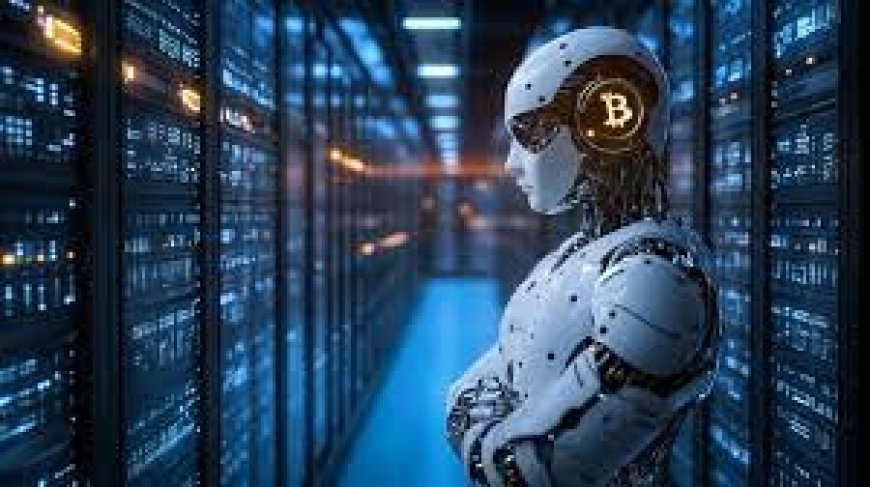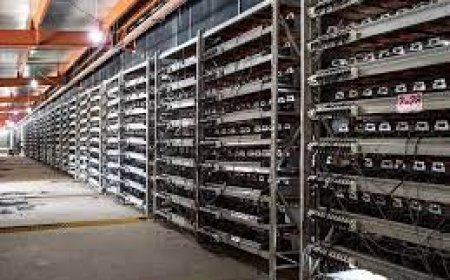AI’s Rise Doesn’t Spell the End for Bitcoin Miners
Public bitcoin miners are rapidly expanding into AI-related ventures, there's still a place for traditional mining operations, according to investment analyst.

While public bitcoin miners are rapidly expanding into AI-related ventures, there is still a place for traditional mining operations, according to an investment bank analyst at Blockspace.
Anyone following the public bitcoin mining sector has likely noticed the growing trend of miners shifting toward artificial intelligence (AI) and high-performance computing (HPC). What began as a gradual shift last year has now evolved into a full-fledged business strategy for many leading bitcoin mining companies.
Several major bitcoin mining firms—including Core Scientific, Bit Digital, Hut 8, Hive, and IREN—have already established revenue-generating AI and high-performance computing (HPC) divisions. Meanwhile, companies like Crusoe Energy, Lancium, Cipher, Terawulf, Riot, and Bitfarms are still in the development or exploratory phase of AI ventures.
With SoftBank, OpenAI, and others committing up to $500 billion to boost AI infrastructure in the U.S. through the Stargate Project, announced in January, the question arises: Where does this AI-driven shift leave bitcoin miners focused solely on crypto mining?
Investment analyst Kevin Dede of H.C. Wainwright believes that both AI-driven and pure-play bitcoin miners have room to thrive. Speaking on Mining Pod’s Bitcoin Stock Show, Dede emphasized that while AI and high-performance computing (HPC) are attractive opportunities, bitcoin mining remains viable.
Has Project Stargate shifted the conversation on AI pivots for bitcoin miners?
Dede argues that the real shift began when Core Scientific announced its CoreWeave partnership six to eight months ago, which changed industry dynamics. While Project Stargate focuses on hyperscale AI infrastructure, he notes that smaller-scale AI implementations remain valuable. Companies like Bit Digital and Applied Digital have shown success in AI/HPC without requiring hyperscale facilities, as many customers seek compute power at different levels.
Why did Riot pause its 600MW Corsicana Phase 2 for AI/HPC evaluation?
Dede attributes Riot’s decision to activist investors, who have influenced the company’s strategy. Despite Riot CEO Jason Les stating in June 2023 that the company would stick to bitcoin mining, the rising demand for HPC and AI has made the 600MW facility’s potential for AI processing more attractive than solely mining bitcoin. He believes the true AI market lies in enterprise applications, where businesses use AI for operational optimization, and that HPC demand will only continue to grow.
When comparing the strategies of Bit Digital and Core Scientific, both companies have significant potential, but their approaches differ.
Bit Digital: Scaling AI Compute Capacity
- Initial Move: Purchased GPUs and leased space in northern Iceland to cater to a European-based client running AI models. However, the distance between Iceland and mainland Europe could introduce latency issues, particularly for inference computing.
- Expansion Strategy:
- Acquired a 4MW facility through the Enovum deal.
- Recently launched another site, aiming for 5MW initially, with plans to scale up to 35MW in HPC capacity by year-end.
- CEO Sam Tabar highlighted that this acquisition opens opportunities for up to 288MW of HPC capacity.
- Risk Factors:
- Acquired a company with proven expertise in building and operating data centers.
- However, scaling up introduces additional risks, such as construction delays or operational hurdles in launching new facilities.
Core Scientific: Leveraging Talent & Industry Expertise
- Strong Leadership: Core Scientific has recruited top-tier professionals with extensive experience in data center operations.
- CEO Adam Sullivan’s Perspective:
- Many professionals in traditional data center firms see limited career growth.
- Core Scientific attracts talent by offering stock options with higher potential returns, making it a compelling choice for industry experts seeking financial growth.
- Competitive Edge:
- Strong track record in data center operations.
- Ability to execute expansion plans efficiently due to experienced leadership and strategic hiring practices.
Conclusion
- Bit Digital is pursuing rapid expansion, but its success depends on execution and scaling efficiency.
- Core Scientific has a more established foundation, leveraging its skilled workforce and industry experience to maintain a competitive edge.
- While both companies have strong growth potential, Bit Digital carries greater risk, whereas Core Scientific benefits from a seasoned team and proven strategies.
The B200 chips being utilized are significantly more powerful but also much more complex, which could lead to delays in CoreWeave’s deployment at Core Scientific’s facilities. More details on these potential setbacks will likely be revealed in Core Scientific’s upcoming earnings call in March, where they are expected to address whether they remain on schedule to power up the first major CoreWeave facility in Q2 and how they are handling networking challenges.
Can Bitcoin Mining and AI/HPC Coexist?
The increasing focus on AI and high-performance computing (HPC) does not necessarily mean bitcoin mining will be sidelined. The idea of a hybrid AI-bitcoin mining data center is compelling because HPC workloads are not constant—they fluctuate depending on whether tasks like model training or inference are being executed.
Since HPC power demand is not continuous, bitcoin mining could fill in the gaps, making use of available power when AI operations are not running at full capacity. Flexible power purchase agreements (PPAs) could allow hosts to dynamically switch between AI and mining, optimizing energy use.
Looking at the bigger picture, both industries can coexist. While there are many potential sites for these hybrid facilities—such as Corsicana and locations in West Texas—not all of them are ideal for AI/HPC expansion. For example, Mike Novogratz’s Helios facility aims to transition into an HPC center, but its remote location and reliance on wind power pose challenges for inference computing due to limited accessibility and connectivity.
One of the most compelling aspects of these business models is their optionality. In a hybrid setup, companies gain transparency—they can predict HPC revenue and take on debt based on stable margins. However, by keeping bitcoin mining operations running, they also retain exposure to potential gains from a rising bitcoin price and improving market conditions.
This flexibility is a key advantage for some of the newer HPC-focused companies, offering investors a balanced mix—a steady revenue stream from HPC with the added potential upside if Bitcoin surges to $200,000 this year. Given this dynamic, many companies experienced in both AI/HPC and bitcoin mining will likely continue operating in both sectors, capitalizing on diverse revenue opportunities.
What's Your Reaction?
 Like
0
Like
0
 Dislike
0
Dislike
0
 Love
0
Love
0
 Funny
0
Funny
0
 Angry
0
Angry
0
 Sad
0
Sad
0
 Wow
0
Wow
0





































































